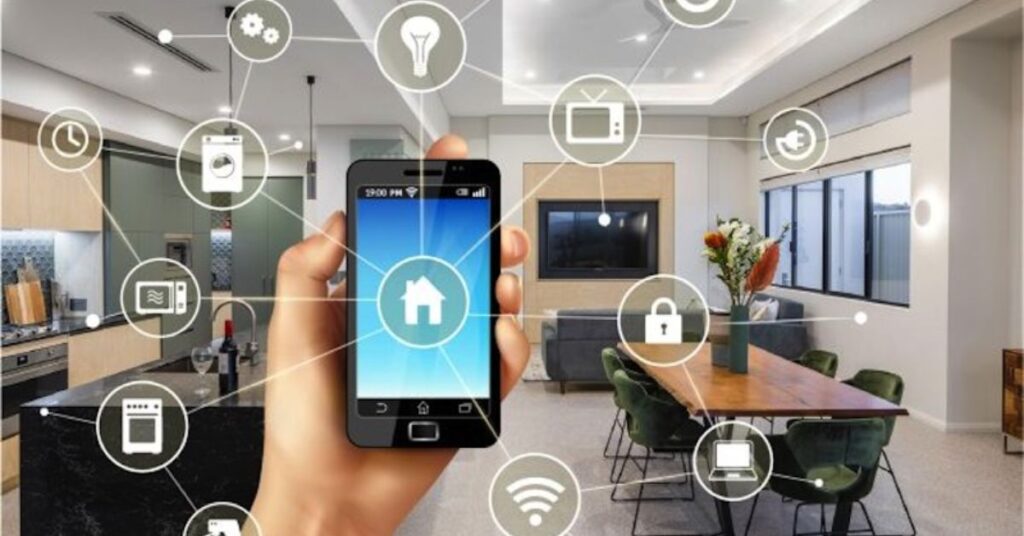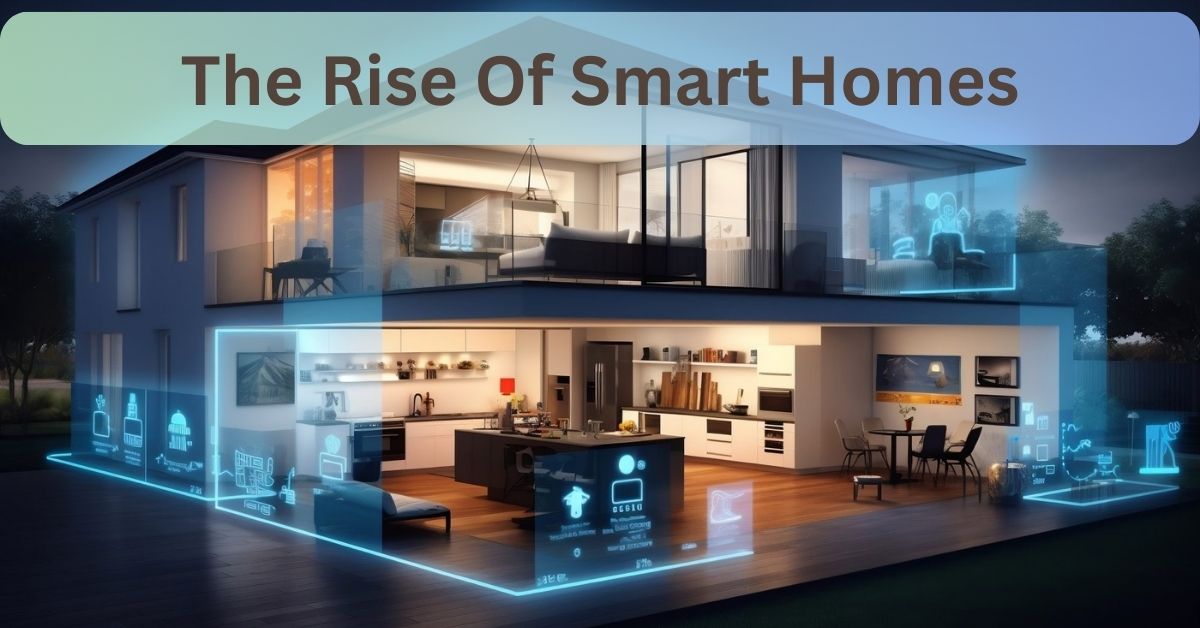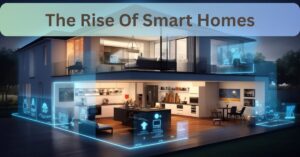The Rise Of Smart Homes-A Comprehensive Guide to Modern Living
Over the past few years, the “smart home” has gone from something out of destiny to something many households can acquire.
Smart homes are becoming famous due to trends in technology influencing home-constructing systems to modify to new intelligent surroundings. This is no longer a dream for the future but a continuous process of transforming present-day life.
This article discusses the characteristics and advantages that smart houses offer to our daily lives, as well as the evolution of smart home technology.
Explain the concept of smart homes:
More specifically, a smart home refers to a living environment with devices that perform tasks that would otherwise require human intervention. These gadgets, lighting, security cameras, or coffee makers, are connected closely and often operated verbally or through a smartphone.
These devices are connected through the Web, developing a coordinated and proficient operative structure capable of controlling numerous factors within the home. A smart home is one with all systems interlinked, simplifying life.
The Rise of Smart Homes:

Automating home functions is an idea of recent popularization and the result of advanced technologies. Still, it has been contemplated for many years, even in science fiction and experiments during the middle of the twentieth century. The first automation was mostly branched into regulating simple tasks like turning on a light or managing security in a building.
However, the smart home that we know today was not configured until thanks to advanced Internet and Wi-Fi technology. Over the past decade, minded corporations such as Google, Amazon, and Apple have queued up the control panel, the central brain behind smart homes, via Google Home, Alexa, and HomeKit, making it easier for users to buy smart home technologies. When IoT was integrated into smart homes, devices transformed how they connected.
Transforming our living spaces with technology:
1. Smart Assistants:
Voice recognition and processing devices such as Alexa, Google Home, and Siri are central controls in smart homes. They also understand voice commands and regulate lighting, devices, appliances, and schedules.
2. Smart Security Systems:
Security has increased with the invention of essential utilities such as the Ring, Nest security cameras, and smart locks. These devices provide real-time videos and feeds, movement and detection, and door operation, even to the point of locking and unlocking them at other stations.
3. Energy Management:
Smart thermostats like Nest and Ecobee can even learn users’ habits and regulate the heating or cooling needed to save energy and money. Intelligent lighting systems include coordinated lighting systems in homes where users can set their timings or use an application on their phone to switch off the lighting system, promoting an energy-efficient lifestyle.
4. Entertainment and Convenience:
Home entertainment systems have also been transformed. Smart TVs, interface systems such as Chromecast or Amazon Fire Stick, and smart speakers offer excellent entertainment solutions.
Health and Wellness Monitoring in Smart Homes:

- Track Fitness Goals: These include incorporated fitness devices, bedside gadgets like intelligent scales, fitness trackers, and connected domestic gyms that track development in daily movement, calorie consumption, or ordinary physical activities.
- Monitor Sleep Patterns: Smart beds and sleep trackers degree your sleep patterns based on your coronary heart rate, breathing, and movement.
- Personalized Health Recommendations: They hope smart homes provide specific health advice by analyzing data from fitness and wellness devices. These recommendations could be customized exercise plans, food plans, or stress-reduction strategies, depending on your habits and way of life.
Essential Smart Home Products:
- Smart Hubs and Voice Assistants Examples: Amazon Echo, Google Nest Hub, Apple HomePod.
- Smart Lighting Examples: Philips Hue, LIFX, TP-Link Kasa Smart Bulbs.
- Smart Security System Examples: Ring Video Doorbell, Arlo Pro, August Smart Lock.
- Smart Plugs and Switches Examples: Amazon Smart Plug, TP-Link Kasa Smart Plug.
- Smart Home Entertainment Examples: Amazon Fire TV Stick, Google Chromecast, Sonos Smart Speakers.
- Smart Appliances Examples: GE Profile Innovative Oven, LG ThinQ washing machine, and Samsung Family Hub refrigerator.
- Smart Home Security Cameras Examples: Nest Cam IQ, Blink Outdoor Camera, Wyze Cam v3.
- Smart Irrigation Systems Examples: Rachio Smart Sprinkler Controller, RainMachine Touch HD.
Challenges and Privacy Considerations:
- Data Privacy Concerns: Smart consumer home products gather a large amount of data related to the house’s inhabitants and are prone to data breaches or unlawful access. A user should educate himself regarding privacy policies and ensure the network is secure.
- Cybersecurity Threats: Devices in smart homes are at a high risk of being hacked. Weak security settings can lead to breaches, as seen in the Mirai botnet attack. This includes using strong passwords for our devices, updating them frequently, and ensuring they are safe.
- Compatibility Issues and Fragmentation: Different smart devices from various manufacturers may need to work more smoothly together. Standards like the Matter protocol aim to address this, but full compatibility still needs to be improved.
- Cost of Implementation: Smart devices in a home are costly; the initial installation and monthly subscription fees pile up. A disadvantage likely to make their adoption a preserve of the few is their high cost, mainly because, in the long run, they could lead to lower costs, such as energy costs.
- Ethical Concerns and Surveillance: Smart appliances such as cameras and smart speakers might cause ethical dilemmas for constant monitoring and accidental creepshots in case shared homes.
FAQs:
1. What impact do smart houses have on sustainability and energy?
They control energy consumption due to the automation that favors low energy consumption and low-cost bills, making them environmentally friendly.
2. Are there privacy issues while using smart home appliances?
Indeed, smart home devices may gather personal information in the process, with privacy breaches central to security questions and concerns.
3. What are other trends to expect in smart home technology in the coming years?
Trends include increased integration of AI for personalized automation, enhanced security features, and the growth of interoperability standards among devices.
Conclusion:
Allowing homes to be innovative is a drastic change from how people live and manage their spaces. Smart homes, comfort, efficiency, and safety features will continue to attract users when people adopt these devices.
However, despite some obstacles, the future of smart homes looks promising, offering millions of consumers the chance to transform their lifestyles over the coming decades.












































Post Comment